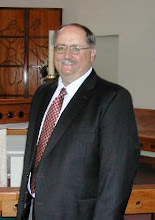Time.
We all want more of it, don’t we?
Well, we got it. Did you enjoy it?
Oh, you don’t know what I’m talking about?
New Year’s Eve of 2008 was longer than most New Year’s Eves. At least by one second.
Just like there’s a leap year every four years, there’s a leap second on occasion as well. Here’s the explanation from http://www.msnbc.com/:
 Earth's trip around the sun — our year with all its seasons — is about 365.2422 days long, which we round to 365 to keep things simpler. But every four years, we add 0.2422 x 4 days (that's about one day) at the end of the month of February (extending it from 28 to 29 days) to fix the calendar. Likewise, a "leap second" is added on to our clocks every so often to keep them in synch with the somewhat unpredictable nature of our planet's rotation, the roughly 24-hour whirl that brings the sun into the sky each morning. . . .The problem is that the Earth is very gradually slowing down, continually throwing the two timescales out of synch, so every so often, a "leap second" has to be tacked on to the atomic clock. . . .Since 1972, leap seconds have been added at intervals varying from six months to seven years — the most recent was inserted on Dec. 31, 2005.
Earth's trip around the sun — our year with all its seasons — is about 365.2422 days long, which we round to 365 to keep things simpler. But every four years, we add 0.2422 x 4 days (that's about one day) at the end of the month of February (extending it from 28 to 29 days) to fix the calendar. Likewise, a "leap second" is added on to our clocks every so often to keep them in synch with the somewhat unpredictable nature of our planet's rotation, the roughly 24-hour whirl that brings the sun into the sky each morning. . . .The problem is that the Earth is very gradually slowing down, continually throwing the two timescales out of synch, so every so often, a "leap second" has to be tacked on to the atomic clock. . . .Since 1972, leap seconds have been added at intervals varying from six months to seven years — the most recent was inserted on Dec. 31, 2005.
The new extra second will be added on the last day of this year at 23 hours, 59 minutes and 59 seconds Coordinated Universal Time — 6:59:59 pm Eastern Standard Time.
Yep, today – December 31, 2008 - known to most of the world as New Year’s Eve, is also Leap Second Adjustment Day.
Don’t you feel more relaxed just knowing about that extra time?
We all want more of it, don’t we?
Well, we got it. Did you enjoy it?
Oh, you don’t know what I’m talking about?
New Year’s Eve of 2008 was longer than most New Year’s Eves. At least by one second.
Just like there’s a leap year every four years, there’s a leap second on occasion as well. Here’s the explanation from http://www.msnbc.com/:
 Earth's trip around the sun — our year with all its seasons — is about 365.2422 days long, which we round to 365 to keep things simpler. But every four years, we add 0.2422 x 4 days (that's about one day) at the end of the month of February (extending it from 28 to 29 days) to fix the calendar. Likewise, a "leap second" is added on to our clocks every so often to keep them in synch with the somewhat unpredictable nature of our planet's rotation, the roughly 24-hour whirl that brings the sun into the sky each morning. . . .The problem is that the Earth is very gradually slowing down, continually throwing the two timescales out of synch, so every so often, a "leap second" has to be tacked on to the atomic clock. . . .Since 1972, leap seconds have been added at intervals varying from six months to seven years — the most recent was inserted on Dec. 31, 2005.
Earth's trip around the sun — our year with all its seasons — is about 365.2422 days long, which we round to 365 to keep things simpler. But every four years, we add 0.2422 x 4 days (that's about one day) at the end of the month of February (extending it from 28 to 29 days) to fix the calendar. Likewise, a "leap second" is added on to our clocks every so often to keep them in synch with the somewhat unpredictable nature of our planet's rotation, the roughly 24-hour whirl that brings the sun into the sky each morning. . . .The problem is that the Earth is very gradually slowing down, continually throwing the two timescales out of synch, so every so often, a "leap second" has to be tacked on to the atomic clock. . . .Since 1972, leap seconds have been added at intervals varying from six months to seven years — the most recent was inserted on Dec. 31, 2005.The new extra second will be added on the last day of this year at 23 hours, 59 minutes and 59 seconds Coordinated Universal Time — 6:59:59 pm Eastern Standard Time.
Yep, today – December 31, 2008 - known to most of the world as New Year’s Eve, is also Leap Second Adjustment Day.
Don’t you feel more relaxed just knowing about that extra time?

































No comments:
Post a Comment